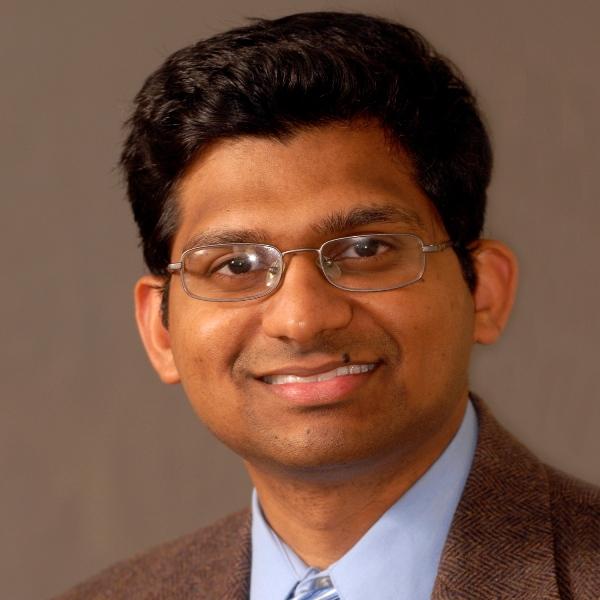J.K. Aggarwal Prize Winner of 2014
Arun Ross

"For contributions that advance the state of art in biometric technologies and extend biometric infrastructure."
Title: Biometrics: From Pattern Recognition to Data Privacy
Time: Plenary talk Monday 25 Aug. 14:30-15:30
Abstract
Biometrics refers to the automated recognition of individuals based on their anatomical and behavioral traits such as fingerprint, face, iris, voice, gait and signature. A classical biometric system may be viewed as a pattern recognition engine that extracts a set of discriminative features from the input biometric data and compares this against a set of stored “templates” in order to determine a match. Thus, a significant number of biometric papers deal with data acquisition, quality enhancement, feature extraction, and matching. However, the study of biometrics extends beyond pattern recognition and engages researchers from many fields such as computer vision, signal processing, cognitive psychology, sensor design, forensics, information security, physiology, medicine, human factors/ergonomics, cryptography, etc. Further, since a biometric system deals with the personal information of an individual, aspects related to data privacy are also being addressed. Thus, an operational biometric system has to contend with a broad gamut of problems ranging from robust pattern recognition to provable data security/privacy in diverse unconstrained scenarios. In this talk, we will first discuss the range of research activities being conducted in the biometrics community, and then present some of our work on heterogeneous face recognition; multibiometric indexing; cross-modality matching of face and iris; and privacy enhancement using visual cryptography and mixing schemes.
Biography
Arun Ross is an Associate Professor in the Department of Computer Science and Engineering at Michigan State University (MSU) and the Director of the i-PRoBe Lab. Prior to joining MSU in 2013, he was a faculty member at West Virginia University (WVU) from 2003 to 2012. He also served as the Assistant Site Director of the NSF Center for Identification Technology and Research (CITeR) between 2010 and 2012. Arun received the B.E. (Hons.) degree in Computer Science from the Birla Institute of Technology and Science, Pilani, India, and the M.S. and Ph.D. degrees in Computer Science and Engineering from Michigan State University. He is the coauthor of the textbook “Introduction to Biometrics” and the monograph “Handbook of Multibiometrics,” and the co-editor of “Handbook of Biometrics”. He is a recipient of the IAPR Young Biometrics Investigator Award (YBIA), the NSF CAREER Award, and was designated a Kavli Frontier Fellow by the National Academy of Sciences in 2006. He also received the 2005 Biennial Pattern Recognition Journal Best Paper Award. Arun served as a panelist at a special event on countering terrorism that was organized by the United Nations Counter-Terrorism Committee (CTC) at the UN Headquarters in May 2013. He was an Associate Editor of IEEE Transactions on Information Forensics and Security (2009 – 2013), and IEEE Transactions on Image Processing (2008 – 2013). He currently serves as Area Editor of the Computer Vision and Image Understanding Journal, Associate Editor of the Image and Vision Computing Journal, Vice President of Education of the IEEE Biometrics Council, and Vice Chair of the IAPR TC4 on Biometrics. URL: http://www.cse.msu.edu/~rossarun/

